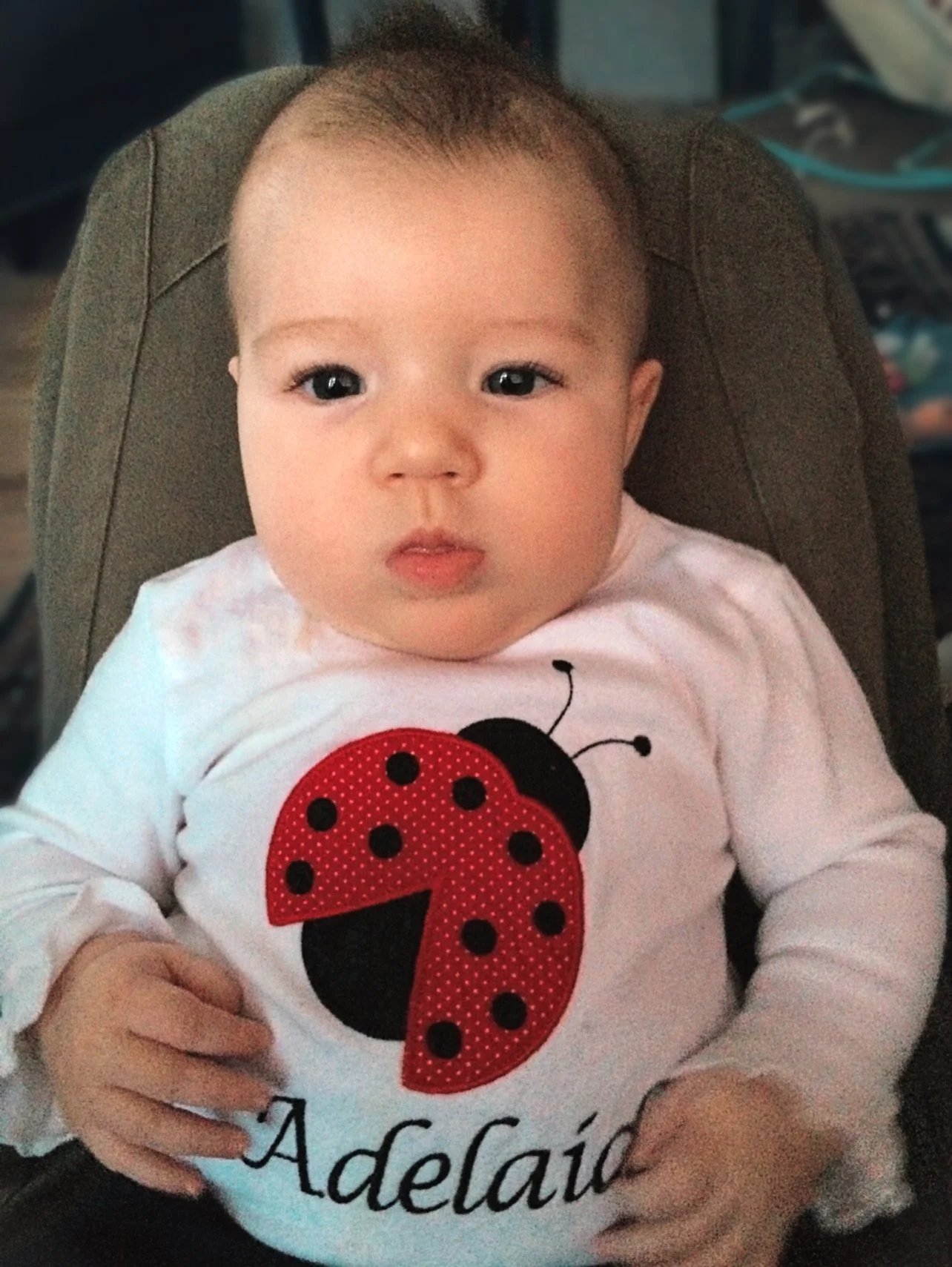Case closed?
Earlier this year, I received an email from our representative at the Undiagnosed Diseases Network. They had finally received and analyzed the results from the genome testing done on Adelaide’s donated brain. If you think funding research for rare and undiagnosed patients is hard, just wait until they’ve passed away. Without the diligence of the Undiagnosed Diseases Network, I don’t think we ever would have received an answer.
We are now fairly certain that the root cause of Adelaide’s lengthy list of symptoms was inherited from Miguel and me in her DENND5A gene. Everyone inherits half a gene from their mother and half from their father. The gene half Adelaide got from Miguel didn’t work at all, the one she got from me, had one letter wrong. For Miguel and I, (and Jackson), having one non-working or compromised gene half was not enough to impact us. But that wasn’t the case for Adelaide, who inherited a compromised gene from each of us. For anyone wondering why receiving a diagnosis even posthumously might be valuable, please note that should Miguel and I have had another biological baby, there would have been a 25% chance that it would have been similarly affected.
DENND5A had been on the list of possible diagnoses for years. We had initially ruled it out because Miguel and Jackson both had this ineffective half of a gene, and they were healthy. But science hadn’t yet been able to determine the impact of the one wrong letter she inherited from me. In fact, there hadn’t even been any reported studies on DENND5A until 2016, over a year after Adelaide was born.
In the coming months, researchers from McGill University will publish a study that includes samples from around 20 DENND5A patients - including Adelaide. What they are aiming to show are the effects of variants in the DENND5A gene, and that one loss of function gene (from Miguel) and one “missense” variant (from me), is enough to cause neurodegeneration and epilepsy. Meaning, that from the moment she was a cluster of cells in my uterus this was always going to be her journey.
There is no cure for this broken gene, nothing even experimental. In fact, this research is so new that, as far as I can tell, there is only one laboratory in the world even working on it. There is nothing we could have done to stop the progression of the disorder. All we ever could have done was treat her symptoms, which we did.
Now, you might be thinking to yourself, wow, that must be such a relief to know what the cause was and to know you did everything you could. And if you were Miguel, that would be true. I, on the other hand, required months to process this information.
First, I had to wrap my brain around the fact that there was never anything we could have done. If I was going to accept Adelaide, for who she was and how she was made, as I have always aimed to do, then I also had to accept that her life was never going to be longer than it was. It means no longer thinking that she should have just celebrated her 8th birthday because that was never going to be her story. I will continue to celebrate her birthday, and inevitably record the time that has passed, but there is no should anymore when it comes to her age.
It also means accepting that I did enough. There was nothing else I could have done. Which is harder to let go of than I would have thought. I yearned for an answer or a treatment for so long. I still read research proposals as part of the work I do with CURE Epilepsy and often wonder if one could have helped Adelaide.
Conversely, and probably the most challenging to grapple with is wondering if we did too much. Nothing we could have done was going to “save” her. So, how many procedures did we put her through unnecessarily? How much pain did I sign off on with the naive hope that this treatment, this therapy, this test would give us answers and her relief?
I had to turn to some of my early grief work to remember that present me, with this new information, can’t punish former me for making decisions with the limited information I had at the time. With the limited information available to ANYONE at the time. We all did our best: me, our family, her clinicians, and nurses.
This is probably the closest we will come to a diagnosis. I wouldn’t bet my life that this was the cause, but I would probably put up a good chunk of our life savings. When you are working in ultra-rare, genetic variants, it is hard to come to definitive conclusions. The science will continue to improve, and something new could pop up that changes what we understand about her genetic code. The uncertainty of it all is a bit anti-climactic if I’m being honest.
So, what now? Well, I’m hoping to connect with some of the other families in the study if they are open to it. I also look forward to having someone explain the research study to me when it is eventually published. Then I will continue to remind myself that I did the best I could and try to find some sense of peace in the fact that Adelaide continues to help push science forward for the next affected family. Her legacy lives on.
ID: Adelaide at two and a half, sitting in a stroller and looking at the camera. She is undergoing an EEG: colorful wires are trailing from her body and her head is wrapped in gauze. She is wearing large black headphones over the gauze and is covered in hospital blankets. Miguel is holding her hand, though he is off camera, all you can see are his hands.



